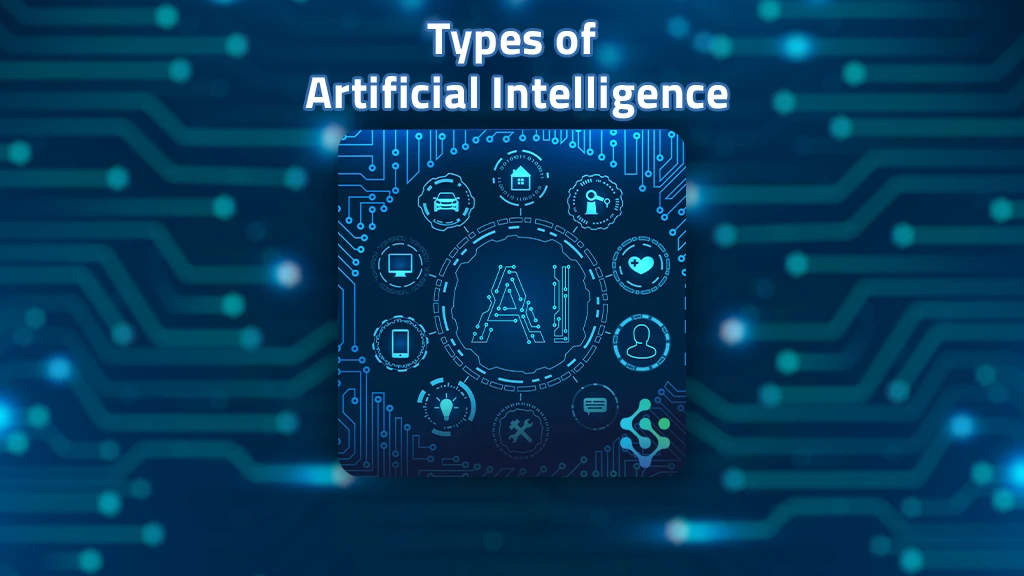In an era where technology shapes our everyday lives, Artificial Intelligence (AI) stands at the forefront of this transformation. The SENEX Intelligent Chain views AI not just as a technological phenomenon but as a paradigm shift in how we interact with the world. This detailed exploration focuses on the various “types of artificial intelligence,” dividing them based on capabilities and functionalities. It aims to provide a comprehensive understanding of AI’s multilayered nature, illustrating with examples, and highlighting the benefits it brings to our society.
Now let’s delve into the understanding of the types of Artificial Intelligence based on capabilities.
The Types of Artificial Intelligence Based on Capabilities
The realm of Artificial Intelligence, as viewed through the lens of its capabilities, is a fascinating landscape. We categorize these capabilities into three distinct classes: Narrow AI, General AI, and Super AI. Each class not only signifies a different level of sophistication but also represents the evolutionary stages of AI development and potential.

Narrow AI – Artificial Narrow Intelligence – ANI
Narrow AI, or Artificial Narrow Intelligence also known as ANI, is designed to perform specific tasks within a limited scope. Unlike its more advanced counterparts, it does not possess understanding or consciousness. It operates under a set of predefined rules or learning algorithms to accomplish its designated task.
For example, consider virtual personal assistants like Siri or Alexa. These systems excel in handling tasks such as setting reminders, playing music, or providing weather updates. They represent Narrow AI’s expertise in handling particular tasks efficiently, yet they lack the ability to perform beyond their programmed capabilities.
General AI – Artificial General Intelligence – AGI
Artificial General Intelligence (AGI) represents a theoretical leap where AI systems would possess the ability to understand, learn, and apply intelligence comprehensively, similar to human cognitive abilities. This level of AI can generalize its learning and reasoning across a wide range of tasks, unlike Narrow AI.
For example, imagine an AI that can play multiple complex games, solve diverse real-world problems, and learn new languages, all with the same ease as a human. It would be capable of applying its intelligence across various domains without needing specific programming for each task.
Super AI – Artificial Superintelligence – ASI
Super AI refers to a future form of AI that surpasses human intelligence across all fields, including creativity, general wisdom, and problem-solving. This level of AI is conjectured to be capable of self-improvement, leading to rapid advancements beyond human capabilities.
For example, a Super AI might be capable of developing new scientific theories, creating innovative art, and solving complex global issues like climate change or resource management, tasks that are currently challenging for human intelligence.
Now let’s delve into the understanding of the types of Artificial Intelligence based on functionalities.
The Types of Artificial Intelligence Based on Functionalities
The classification of Artificial Intelligence (AI) can also be effectively understood through the lens of its functionalities. This perspective categorizes AI into four distinct types: Reactive Machines, Limited Theory, Theory of Mind, and Self-awareness. Each type represents a different level of complexity and capability in how AI systems process information and interact with their environment.

Reactive Machines
Reactive Machines are the most basic form of AI. These systems are designed to respond to specific inputs with specific outputs, without any ability to use past experiences to inform future actions. They operate in the present moment, reacting to stimuli based on pre-programmed algorithms without memory or learning capabilities.
For example, IBM’s Deep Blue, which famously defeated a chess grandmaster, is a prime example. It analyzes the current state of the chessboard and reacts with the best possible move. However, it doesn’t learn from past games or modify its strategy based on experience.
Limited Theory – Limited Memory AI
Limited Theory AI, also known as Limited Memory AI, represents a more advanced functionality where AI systems can use some past data for a short period to make decisions. These systems have the ability to temporarily store and process past information, which enables them to perform a wider range of tasks compared to Reactive Machines.
For example, autonomous vehicles are a real-world application of Limited Memory AI. These vehicles navigate the roads by analyzing immediate data from sensors and referencing preprogrammed experiences like lane markings and traffic light recognition.
Theory of Mind AI
Theory of Mind AI is an advanced and still largely theoretical aspect of AI, aiming to understand and interpret human emotions, beliefs, and needs. This type of AI is expected to have the ability to interact socially, recognizing and responding to human emotional states and adjusting its behavior accordingly.
For example, an AI therapist that can interpret verbal and non-verbal cues to understand a patient’s emotional state and respond empathetically would be an example of Theory of Mind AI.
Self-aware AI
Self-aware AI represents the summit of AI development, where AI systems would have their own consciousness, self-awareness, and emotions. This type of AI would be aware of its existence, understand its own internal states, and possibly possess self-improvement capabilities.
For example, a self-aware AI could be depicted in science fiction where an AI entity exhibits personal desires, exhibits self-preservation instincts, and engages in complex decision-making based on its self-awareness.
Joining in the Advantages of Artificial Intelligence
The advantages of AI are far-reaching and diverse. In business, AI enhances efficiency and innovation. In healthcare, it enables precision medicine, improved patient care, and streamlined administrative processes. Moreover, each of the “types of Artificial Intelligence” contributes uniquely to these benefits, underpinning various sectors with its specialized capabilities and functionalities.
In the realm of environmental protection, AI aids in monitoring and predicting climate change impacts, offering valuable insights for sustainable practices. General AI, with its ability to analyze vast amounts of data from different sources, could play a pivotal role in developing comprehensive environmental strategies.
As AI technology advances, we may see the emergence of more sophisticated AI types like Super AI and Self-aware AI, which could offer solutions to some of humanity’s most complex and persistent challenges, such as disease eradication, poverty reduction, and global peacekeeping. However, it’s crucial to approach AI development responsibly. The ethical implications, especially with advanced AI types, demand careful consideration to ensure these technologies benefit society as a whole. Issues such as privacy, security, and the impact on employment must be addressed as part of a comprehensive AI strategy.
In conclusion, these types of Artificial Intelligence offer a framework to understand the vast potential of AI. From enhancing business operations to contributing to global challenges, AI’s role is integral and expanding. As we continue to explore and develop these AI types, our focus should be on harnessing their potential responsibly and ethically, ensuring that AI remains a force for good in our society. The future of AI is not just about technological advancement but about shaping a world where technology works in harmony with humanity, fostering growth, sustainability, and wellbeing for all.


No comment